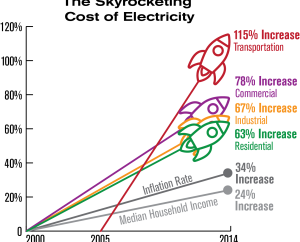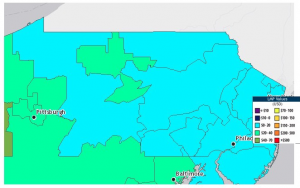The electricity age is the most common way of producing electric power from wellsprings of essential energy. For utilities in the electric power industry, it is the stage before its conveyance to end clients or its stockpiling. Electricity isn’t uninhibitedly accessible, so it should be “delivered”. Creation is done in drive stations. Electricity is most frequently created at Houston Energy Plans by electromechanical generators, fundamentally determined by heat motors filled by burning or atomic splitting yet in addition by different means like the dynamic energy of streaming water and wind. Other energy sources incorporate sunlight-based photovoltaics and geothermal power. Getting rid of coal-terminated power stations and ultimately gas-terminated power stations, or catching their ozone-harming substance outflows, is a significant piece of the energy change expected to restrict environmental change. Immeasurably more sun-based power and wind power are estimated to be expected, with electricity requests expanding unequivocally with an additional charge for transport, homes, and industry.

History
- The crucial standards of the electricity age were found during the 1820s and mid-1830s by English researcher Michael Faraday. His technique, actually utilized today, is for electricity to be produced by the development of a circle of wire, or Faraday plate, between the shafts of a magnet. Focal power stations turned out to be financially functional with the improvement of exchanging current (AC) power transmission, utilizing power transformers to communicate power at high voltage and with low misfortune.
- Business electricity creation began with the coupling of the dynamo to the pressure-driven turbine. The mechanical creation of electric power started the Second Modern Upheaval and made conceivable a few developments utilizing electricity, with the significant supporters being Thomas Alva Edison and Nikola Tesla. Already the best way to create electricity was by substance responses or utilizing battery cells, and the main viable utilization of electricity was for the message.
- The electricity age at focal power stations began in 1882 when a steam motor driving a dynamo at Pearl Road Station created a DC flow that controlled public lighting on Pearl Road, New York. The innovation was immediately embraced by numerous urban areas all over the planet, which adjusted their gas-energized streetlamps to electric power. Not long after electric lights would be utilized in open structures, in organizations, and to drive public vehicles, like cable cars and trains.
Dispersion of Electricity
The earliest dispersion of electricity came from organizations working freely with each other. A shopper would buy electricity from a maker, and the maker would disperse it through their power framework. As innovation improved so did the efficiency and proficiency of its age. Innovations, for example, the steam turbine greatly affected the proficiency of the electrical age yet in addition the financial matters of age also. This transformation of intensity energy into mechanical work was like that of steam motors, but at an essentially bigger scope and undeniably more beneficially.
The enhancements of these huge scope age plants were basic to the course of concentrated age as they would become essential to the whole power framework that we currently use today. All through the center of the twentieth hundred years, numerous utilities started combining their circulation networks due to financial and proficiency benefits. Alongside the innovation of significant distance power transmission, the coordination of force plants started to frame. This framework was then tied down by local framework administrators to guarantee strength and unwavering quality.

